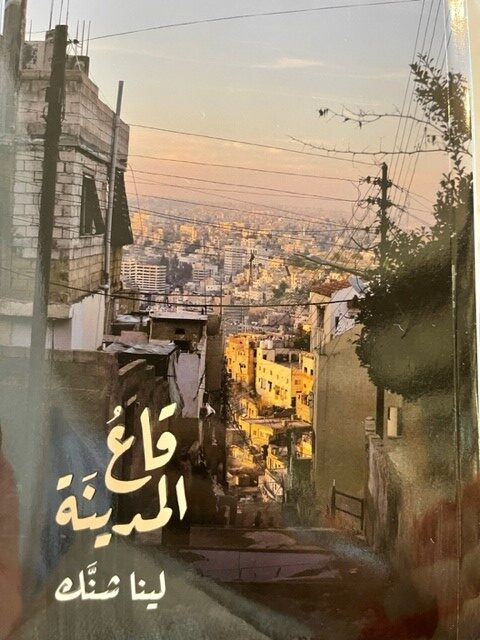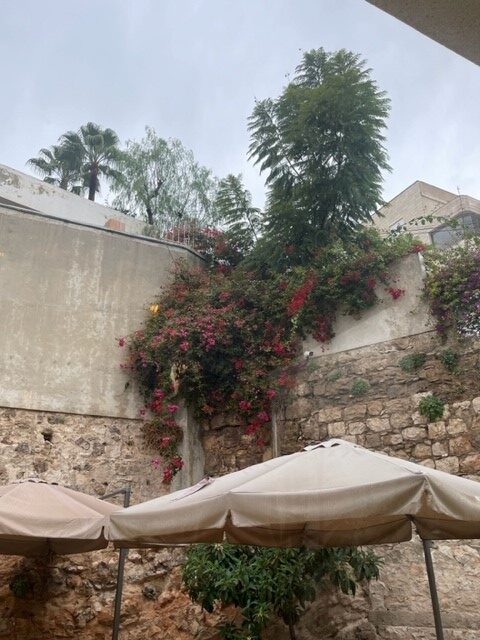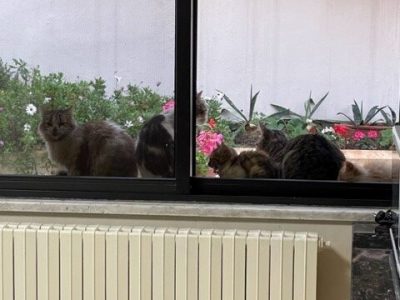Fann wa Chai (Art and Tea) in Amman
One summer day in the mid-1980s, in the very early hours of the morning, I sat waiting on the porch of our Shmeisani home. My friends were picking me up to go to Aqaba by the Red Sea, 200 miles away. Remember this moment, I distinctly recall telling myself. Remember it because if there ever was one that truly captured Amman, you’re living it.
The place has a mood entirely its own. Each city does, I suppose. But Amman’s is an unusual mixture of somberness and bliss. One is never without the other. The town broods and purrs at one and the same time: in the lull of the hours as we approach Friday, the actual start of the weekend; in the dead calm of Friday itself; in the hills that have escaped the harshness of life, and in those that have not; in the soft breeze of early spring or the gray skies of the winter that nudge you to put up your feet and let your sight wonder to nowhere in silence–the hum is still present.
I recently came upon Lina Shannak’s 2019 City Shallows, courtesy of Sinan Sweiss, owner of Jabal Amman Publishing. And what a wonderful read it turned out to be; unusually sensitive and fluent in its renderings of East Amman, where the act of living tends to be at its most challenging and raw. Through a series of tidy vignettes, Shannak unravels the messiness of life there, by turns Kafkaesque and stubbornly unkind, endearing and funny. But that photo on the book’s cover! That’s the Amman mood of which I write.

Amman today is a massive metropolis that just keeps growing in every direction. Its traffic jams have surpassed Beirut’s and are inching closer to Cairo’s, its hills are haphazardly peppered by endless formations and rows of houses and buildings; its streets, alleys, and highways wrap themselves around each other like an albatross. But remarkably that mood I describe seems everlasting.



I don’t visit Amman too often nowadays, and when I do, I don’t stay long. I am not sure why. It still matters, it’s still full of friends, still warm to me, still home in so many ways. The family house is still there, with every piece of its history intact and well; so is my room, so are the cats.

The launch of This Arab Life this past week at the charming Fann wa Chai (Art and Tea) in Jabal al-Weibdeh brought it all back. Perhaps because Linda Khouri’s space for artists and writers reminds me of Amman’s old houses, so welcoming and cozy and reassuringly familiar. Perhaps because al-Weibdeh, against great odds, has stayed true to itself. Perhaps because so many childhood friends came to the launch and for a couple of hours it felt like one of our parties of yore, all giggles and whispers, laughter and camaraderie. I hadn’t seen some of them for years; it took a second to hook up again.



Back in the 1970s and ‘80s, al-Weibdeh didn’t have many go-to places, but it was the neighborhood of many chums. Now, it’s where the art scene is, where theaters throb, where the coolest bars and cafés are. The creative class is here; the mavericks have set up their bubbles and sandboxes here; those who want to live relatively light and unshackled congregate here.
Al-Weibdeh, in other words, is Amman at its most tender and tolerant and luminous. It is a cocoon, obviously. But then what part of our Arab world does not thrive with such cocoons–if not because of them.
*****
On Another Note
I keep it light this week as well.
Did Mushrooms inspire Santa Claus? Apparently! The Marginalian sheds light on the matter:
According to the BBC, the shamans of the indigenous Sámi people of Lapland consumed small amounts of Amanita muscaria in their visionary rituals and drank urine from their reindeer, who eat the iconic red-and-white mushroom as part of their diet and metabolize its toxins without harm, excreting a fluid still full of psychoactive compounds but free from toxins. One of the known psychedelic effects of Amanita muscaria on humans is the sensation of flying, which might explain the origin of the myth about the man clad in red and white soaring through the sky on his reindeer-drawn sled, dispensing tokens of love to the world.
